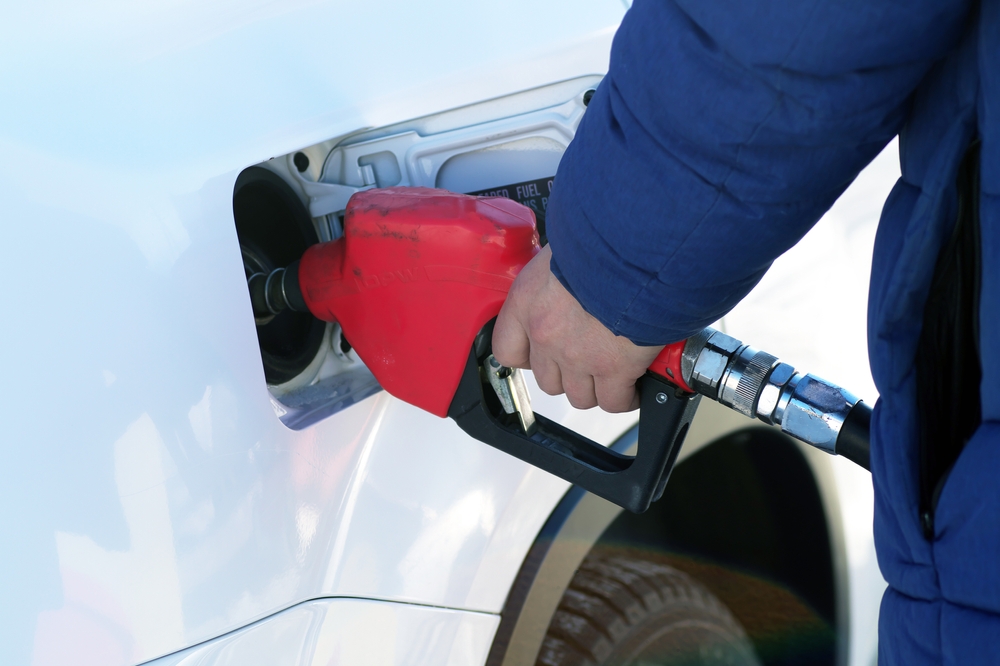CASPER, Wyo. — Natrona County’s average gasoline price once again did an about-face from last week, falling 10 cents to settle at $2.57 per gallon today.
Meanwhile, the national average gas price fell another 4.1 cents over the last week. It stands at $2.98 per gallon, according to GasBuddy data. However, AAA reports a national average price of $3.03, down another 5 cents from last week. Wyoming’s state average dropped 10 cents to $2.93, AAA said.
Per GasBuddy’s stats, the national average is down 19.3 cents from a month ago and is 15.2 cents per gallon lower than a year ago. The national average price of diesel has decreased 3.7 cents in the last week and stands at $3.591 per gallon.
“Gas prices have finally fallen below $3 per gallon nationally — the earliest date we’ve seen a $2.99 national average since 2020, when COVID was the primary driver of low prices,” said Patrick De Haan, head of petroleum analysis at GasBuddy. “OPEC+ deserves much of the credit for this trend, having steadily raised oil production for much of 2025. Currently, 35 states have average gas prices below $2.99 per gallon, and GasBuddy even recorded the first $1.99 cash price at a station in Evans, Colorado, with stations in Oklahoma and Texas not far behind.
“Barring any major disruptions, gas prices are likely to remain slightly below year-ago levels and could stay under $3 for much of the next few months,” he added
Natrona County’s average price of $2.57 is Wyoming’s lowest for nine weeks running. The cheapest fuel in the county on Monday is $2.38 at Exxon, 400 Valley Drive, followed by $2.47 at Loaf ‘N Jug, 1900 E. 2nd St., according to GasBuddy’s report.
(AAA graphic)
Laramie County’s $2.66 per gallon moved Campbell County from the state’s second lowest to its third at $2.68.
Also included in GasBuddy’s report:
OIL MARKET DYNAMICS
Oil prices continued the new week where they left off last week — sliding — due to continued concerns over a looming potential supply glut. OPEC+ members have continued to raise production, and while much of the excess is currently being absorbed by China, filling their strategic reserve, their economy grew at a snail’s pace in the last quarter, leading many to wonder how much more oil China will buy to fill reserves given their slowdown. In early Monday trade, WTI crude was down 51 cents to $57.03 per barrel, within arm’s reach of hitting new multi-year lows, and down from $59.49 a week ago. Brent crude was down 57 cents to $60.72 per barrel, down from last Monday’s $63.32 per barrel start. “Comments from President Trump that India might stop buying Russian oil saw oil prices temporarily increase last week, but the ongoing market uncertainty regarding trade tensions and its impact on oil demand kept oil prices under pressure,” said Giovanni Staunovo, UBS commodities analyst, in an e-mail. In addition, the large BP oil refinery in Whiting, Indiana experienced a small fire last week, which boosted wholesale gasoline prices sharply for the Great Lakes, which also sent Canadian oil prices tumbling.
OIL AND REFINED PRODUCT SUPPLIES
The EIA’s Weekly Petroleum Status Report for the week ending October 10, 2025, showed U.S. oil inventories rose by 3.5 million barrels, and are about 4% below the seasonal average for this time of year, while the SPR climbed 800,000 barrels to 407.7 million. Gasoline inventories fell by 0.3 million barrels and stand slightly below the five-year seasonal average, while distillate inventories fell by 4.5 million barrels and are about 7% below the five-year seasonal average. Refinery utilization plummeted 6.7 percentage points to 85.7%, while implied gasoline demand, EIA’s proxy for retail demand, fell 464,000 bpd to 8.455 million barrels per day.
GAS PRICE TRENDS
The most common U.S. gas price encountered by motorists stood at $2.89 per gallon, up 10 cents from last week, followed by $2.79, $2.99, $2.69, and $2.59, rounding out the top five most common prices.
The median U.S. gas price is $2.82 per gallon, down 3 cents from last week and about 16 cents lower than the national average.
The top 10% of stations in the country average $4.45 per gallon, while the bottom 10% average $2.37 per gallon.
The states with the lowest average prices: Oklahoma ($2.45), Texas ($2.54), and Arkansas ($2.55).
The states with the highest average prices: California ($4.60), Hawaii ($4.45), and Washington ($4.36).
Biggest weekly changes: Ohio (+20.4¢), Illinois (-12.1¢), Michigan (-10.1¢), Oregon (-10.0¢), North Carolina (-9.5¢)
DIESEL PRICE TRENDS
The most common U.S. diesel price stood at $3.49 per gallon, down 20 cents from last week, followed by $3.59, $3.39, $3.69, and $3.29, rounding out the top five most common prices.
The median U.S. diesel price is $3.49 per gallon, down 4 cents from last week and about 10 cents lower than the national average.
Diesel prices at the top 10% of stations in the country average $4.69 per gallon, while the bottom 10% average $2.92 per gallon.
The states with the lowest average diesel prices: Texas ($3.06), Oklahoma ($3.11), and Mississippi ($3.19).
The states with the highest average diesel prices: Hawaii ($5.13), California ($5.08), and Washington ($4.98).
Biggest weekly changes: Florida (-14.9¢), New Mexico (-6.5¢), Louisiana (-6.3¢), North Carolina (-6.3¢), Alabama (-5.5¢)




